Background/Purpose: I am creating a coldfusion document that contains SQL for grabbing values from my company's database. I am finding the conversion rate (Licenses Sold / Registrations) per Sales Rep on our team. Each Rep has an ID ( RegionalDirectorID) tied to users to help keep track.
Question/Problem: The problem is that we have other workers that sell licenses here or there, such as our CEO, Head Developer etc. We have 8 sales reps with the UserType of 8. I am using another query to select those UserTypes, to differentiate from other people so that our data doesn't get mixed up selecting them too.
As you can see below, I am using a cfloop to loop thru the getUsers query, specifically to help the line(Users.RegionalDirectorID = #getUsers.UserID#) print out all of the ID's of our sales reps. When I don't have the cfloop entered, I only get one row showing one sales rep. If I do have the cfloop, I will get the last sales rep.
Code:
<cfset myQuery = QueryNew("ID, ConversionRate")>
<cfquery name="getUsers" datasource="#dsn#">
Select UserID FROM USERS WHERE
UserTypeID = 8
AND ISACTIVE = 1
</cfquery>
<cfquery name="getREGRD" datasource="#dsn#">
Select COUNT(DISTINCT(Users.UserID)) AS TOTALREG, RegionalDirectorID
FROM Users
WHERE UserTypeID = 3
<!--- <cfloop query="getUsers">
AND (Users.RegionalDirectorID = #getUsers.UserID#)
</cfloop>--->
AND (PARENTID IS NULL OR PARENTID = 0)
<cfif len(selectMonth)>
AND MONTH(Users.DateStamp) = #selectMonth#
<cfelse>
AND MONTH(Users.DateStamp) = #MONTH(NOW())#
</cfif>
GROUP BY Users.RegionalDirectorID
</cfquery>
<cfquery name="getREGRDSold" datasource="#dsn#">
Select COUNT(DISTINCT(UserTractLicense.UserID)) AS TOTALSOLD, Users.RegionalDirectorID
FROM Users, UserTractLicense
WHERE Users.UserID = UserTractLicense.UserID
AND Users.UserTypeID = 3 AND
(PARENTID IS NULL OR PARENTID = 0)
<cfif len(selectMonth)>
AND MONTH(Users.DateStamp) = #selectMonth#
<cfelse>
AND MONTH(Users.DateStamp) = #MONTH(NOW())#
</cfif>
GROUP BY Users.RegionalDirectorID
</cfquery>
<!---<cfset newRow = QueryAddRow(myQuery, #getREGRD.RecordCount#)>
<cfloop query="getREGRD">
<cfset QuerySetCell(myQuery, "ID", #getREGRD.RegionalDirectorID#, getREGRD.currentRow) />
</cfloop>
<cfloop query="getREGRDSold">
<cfset QuerySetCell(myQuery, "ConversionRate", #getREGRDSold.TOTALSOLD#/#getREGRD.TOTALREG#, getREGRDSold.currentRow) />
</cfloop>
--->
<!---<cfdump var="#myQuery#">--->
<cfdump var="#getREGRD#">
<cfdump var="#getREGRDSold#">
<cfoutput query="getREGRDSold">
#getREGRDSold.RegionalDirectorID#
</cfoutput>
The cfloop was causing the newQuery to shoot out the error below. That is why some of it is commented out:
An error occurred while evaluating the QueryAddRow function: Parameter> 2, 0, of the QueryAddRow function must be a positive integer.
The error occurred on line 70.
The resulting data has some RegionalDirectorID's that do not have the UserTypeID of 8, such as the NULL cells, which I would like to remove from the results of the query.
